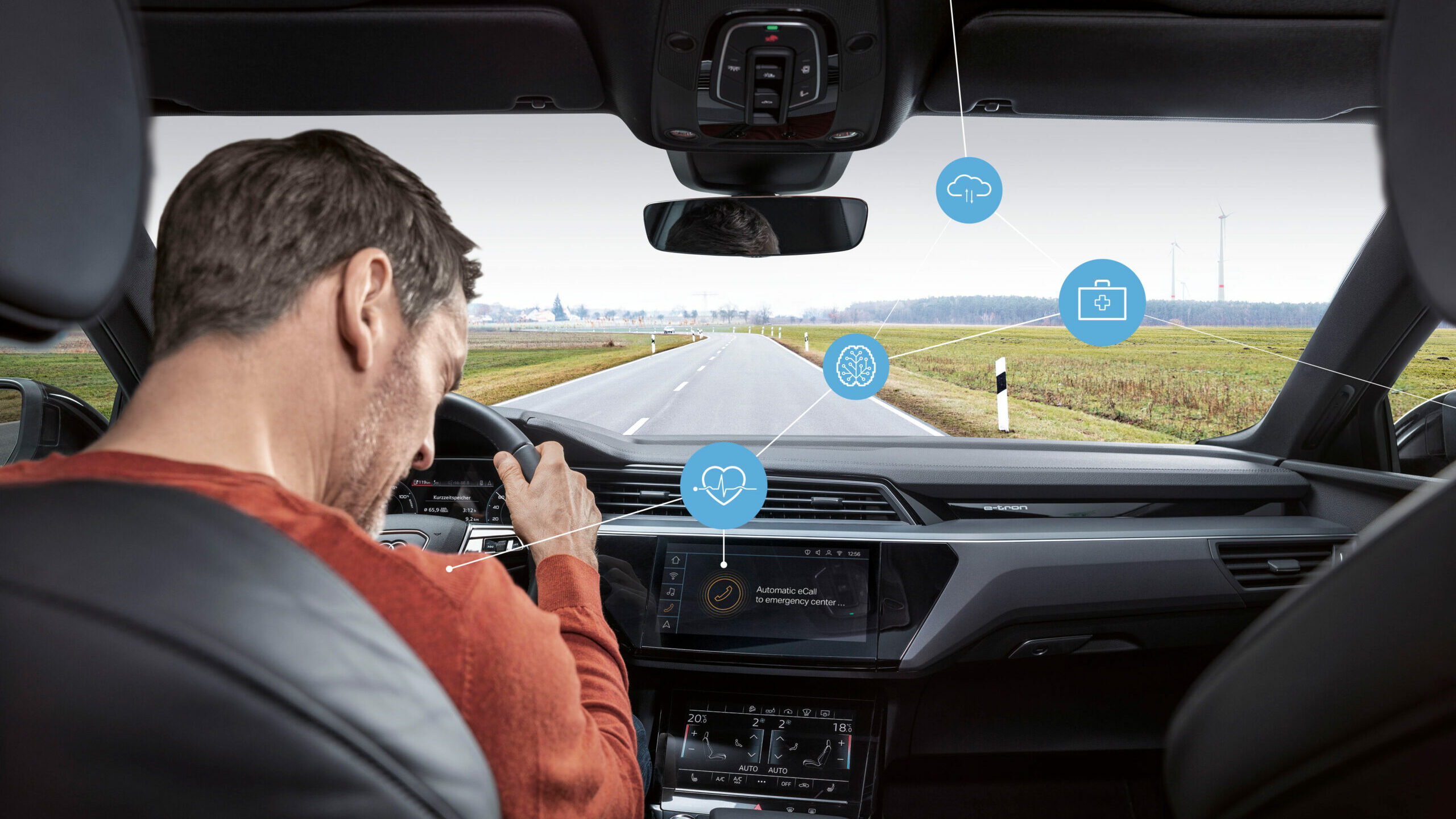The Car That Cares
As the average age of drivers rises, the likelihood of emergencies behind the wheel due to illness increases. At the same time, many people with pre-existing conditions are unable to use the car or can only do so to a limited extent. IAV has joined forces with the University of Oldenburg, OFFIS and the European Medical School Oldenburg-Groningen to develop a digital assistant. The assistant accurately observes and detects changes in the driver’s health status and automatically initiates rescue measures in an emergency if it registers shortness of breath or even a heart attack, for example.
Combined expertise from cloud computing, machine learning and medicine
The health assistant links the driver’s driving behavior with their current health data and can thus detect deviations in breathing as well as heart rate and react accordingly. Jens Schulze, Head of Department Data Analytics and Fleet Validation at IAV, declares “In the event of slight respiratory distress, the assistant warns the driver via the infotainment system, activates the lane departure warning system as a supportive measure if necessary, and reduces the speed. In emergencies such as a heart attack or loss of consciousness, the vehicle comes to a safe stop at the side of the road and places an eCall.” The driver has the option of stopping the initiated measures at any time. IAV has already successfully implemented an initial prototype of the system in a commercial vehicle.

In an emergency, the car comes to a safe stop. Previously the health assistant registers shortness of breath or a possible heart attack. However, the AI can also be trained to detect other symptoms.

In an emergency, the vehicle independently makes an emergency call. This allows individual rescue measures to be initiated immediately if necessary.
IAV developed “The Car That Cares” together with the University of Oldenburg, OFFIS and the European Medical School Oldenburg, which provide support in sensor technology, the detection of medical emergencies and the evaluation of medical devices. The prototype assistant consists of several components integrated into the vehicle architecture: a chest strap from the medical field, AI-supported software installed in the vehicle, and a smart and secure cloud infrastructure.
The AI developed by IAV analyzes health and vehicle data in the cloud and creates a digital driver profile that serves as a reference for the software in the vehicle. As soon as the AI-powered software in the vehicle detects that the driver’s data deviates from normal and may become safety-critical, it gradually activates the vehicle’s assistance and automation functions. The trained software is able to register a variety of emergency situations – and react accordingly. “To train our self-learning algorithms, we analyzed different breathing and heart rate data. Subsequently, we defined with our project partners which ranges are considered normal states and what must be interpreted as irregularities or outliers,” explains Schulze. These jointly defined guideline values are trained to the system’s algorithm by the engineers.
«The health assistant can be incorporated into the existing software architecture of modern production vehicles as well as integrated during the development phase of new models.»
— Head of the Connected Systems Integration Department at IAV
Modular design enables integration of further medical data
Basically, the system uses the assistance and automation functions available from the manufacturer to independently stay in lane, slow down or pull over. In order for the system to provide this personalized and proactive support in an emergency, manufacturers’ approval is required to control the VAS interfaces.
All road users would benefit from a digital guardian angel that prevents accidents in medical emergencies. It could warn not only in passenger cars but also in commercial vehicles such as trucks and buses in the event of critical changes and bring the vehicles, which weigh several tons, to a safe stop. Thanks to the modular design, other measuring systems and sensors can also be integrated, for example to determine oxygen saturation and sugar levels. The secure data infrastructure can be flexibly designed and adapted to different international data protection regulations – so that the guardian angel can watch over the driver anywhere in the world.
The article was published in automotion 01/2021, the automotive engineering magazine of IAV. Here you can order the automotion free of charge.


